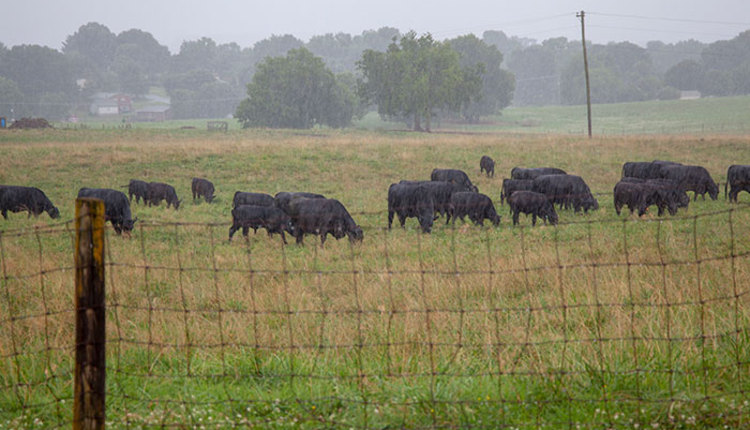Wet pastures? Do this |
| By Hay and Forage Grower |
|
|
|
It’s a dilemma that happens to nearly every livestock producer at one point or another: Copious amounts of good forage to graze coupled with soils that have been saturated by unrelenting rainfall. In such situations, business as usual may result in permanent damage to the paddock and its soils. The problem is exacerbated when summer or winter annuals comprise the forage source. Sjoerd Willem Duiker, an associate professor and soil management extension specialist at Penn State University, offers some advice to producers who find themselves with saturated pasture soils. His recommendations, as follows, come from personal experiences in managing a pasture-grazing field demonstration at Penn State’s Ag Progress Days this year. 1. If possible, keep animals on a hard surface and feed hay. A backup approach is a sacrifice paddock. Both of these are meant to be short-term options. It’s always advisable to maximize grazing time versus hay feeding. 2. Move animals frequently (hours not days) when soils are excessively wet; this limits hoof impact. If animals are moving within the same paddock, use a back-fence and move the water source, if possible. As soils dry out, larger areas can be allotted and the animals can be moved at normal intervals. 3. Utilize tall fescue and other sod-forming perennials when soils are wet. They will withstand animal impact better than annuals. The underground root mass of perennials is far greater than that of annuals and does a better job supporting animals and limiting soil damage. 4. No-till seed winter and summer annuals. This helps to maintain soil structure versus having to establish them with tillage. Although you might still have to pull animals off annual pastures temporarily, that time frame will be minimized with no-till. 5. Don’t overgraze. This helps strengthen the root system and allows for faster regrowth after grazing. 6. Use long rest periods. On average, wait 20 to 30 days between grazing cycles. Weather conditions will dictate the length of rest time needed. Duiker finishes by emphasizing the need to manage the belowground “herd” of soil organisms. “By taking care of your soil first, you can make it more resilient, so it withstands compaction better, and it also recuperates faster,” he says. |

